The Estonian brand Degritter took the vinyl community by storm when it released its original Degritter record cleaning machine just a few short years ago.
The Degritter record cleaner quickly built a reputation for being one of the best ultrasonic record cleaning machines for home use. Not wanting to rest on their laurels, the Degritter MARK II promises even better performance.
Can it deliver? Join me as I delve into this full-feature review, including a complete video overview with audio samples.
Degritter MARK II – What’s New?
Degritter have centered the improvements for this model around two core aspects:
Ultrasonic Power Drive 2.0: which they claim is stronger but still safe for your records. Essentially this equates to a new and improved ultrasonic amplifier.
Pulse Mode Cleaning: Promising to deliver “a better cleaning effect while keeping power consumption low.
According to Degritter, “During pulsing, ultrasonic transducers rapidly switch on and off at high power. This gives enhanced cavitation in water, but keeps the average power consumption low.
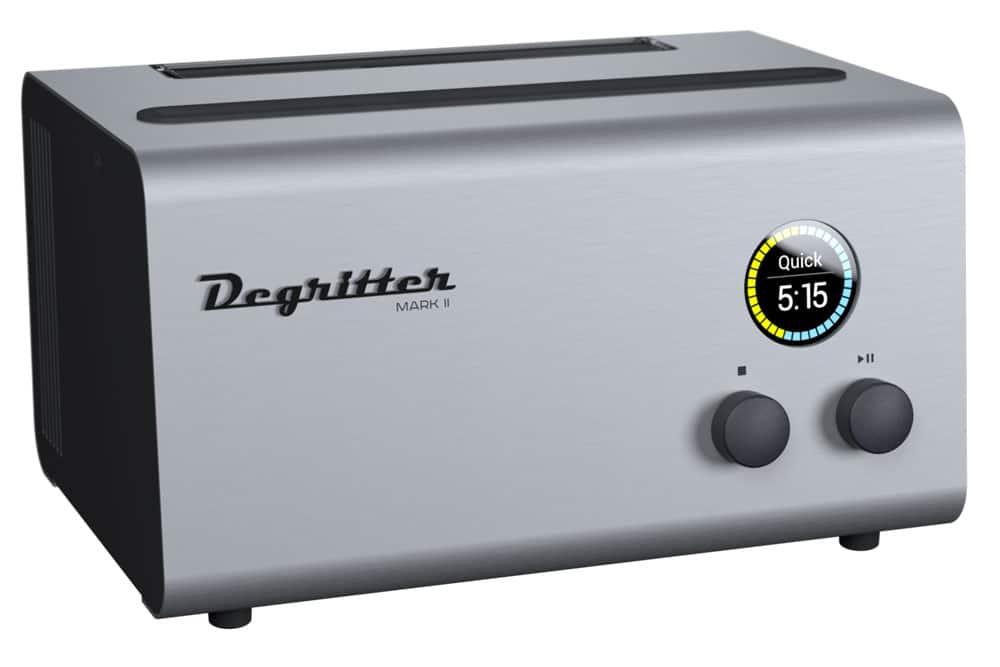
Lastly, Degirtter have updated the look and feel. Most significantly, the control buttons are said to have a more “defined click”. And I must say, they feel very reassuring to press; there’s a real feeling of quality about this machine’s whole aesthetic and build.
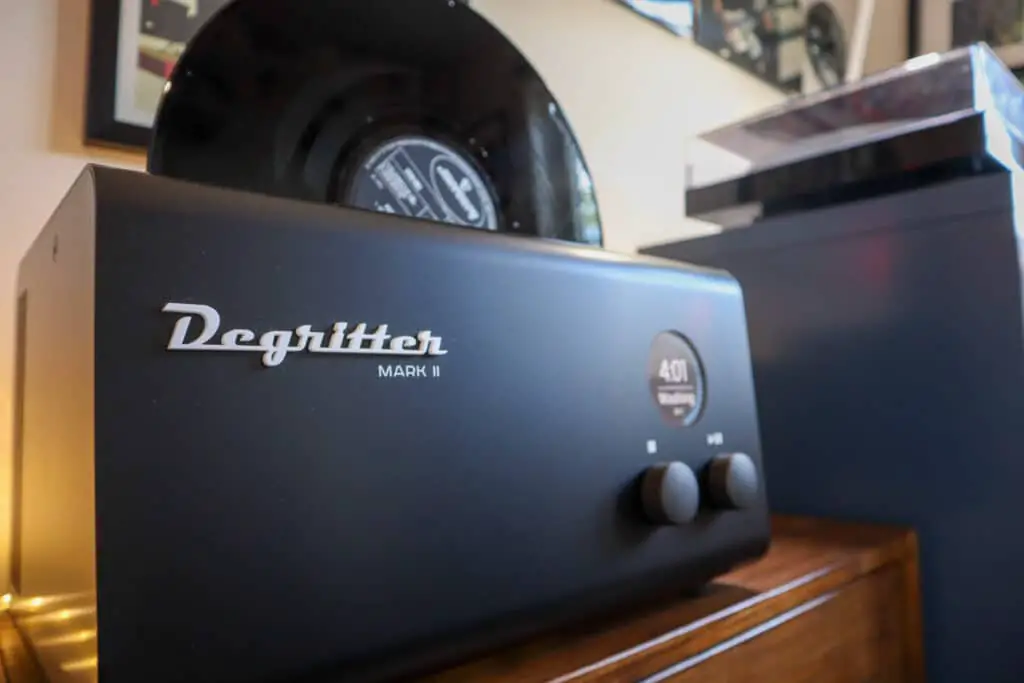
Degritter Record Cleaner: Machine In Use
Just like the MARK I edition, the MARK II has three main running cycles:
Quick: suitable for records with a light amount of dust that just need a quick spruce up. For records that I’ve cleaned previously, this is usually enough, in my experience.
Medium: This should be your default program for most records, including second-hand finds. Unlike the “quick” cycle medium includes a pre-soak stage before ultrasonic cavitation starts. This helps loosen up any dust and grime to make the cleaning process more effective.
Just like cleaning records with a vacuum record cleaning machine, or even by hand, soaking a record will improve results.
Heavy: Degritter recommends saving this program for when medium simply doesn’t get the job done. In other words, very stubborn dirty records.
As always when cleaning vinyl records, it’s best to take as light an approach as you can to get the job done, so defaulting to medium is good advice.
Filling the Water Tank:
Unlike with previous releases of the Degritter Ultrasonic, the manual of the MARK II recommends filling the water tank as high as you comfortably can.
Previously, the tank clearly indicated minimum and maximum markers. In this case, there is a min marker, which we need to adhere to, but beside that, the more water the better.
Once the tank is inserted into the machine, it’s best to run the Degritter’s “Degas” program, which removes any excess gas from the machine to improve cleaning results. This step isn’t mandatory, but I’d say it was advisable with a new tank of distilled water.
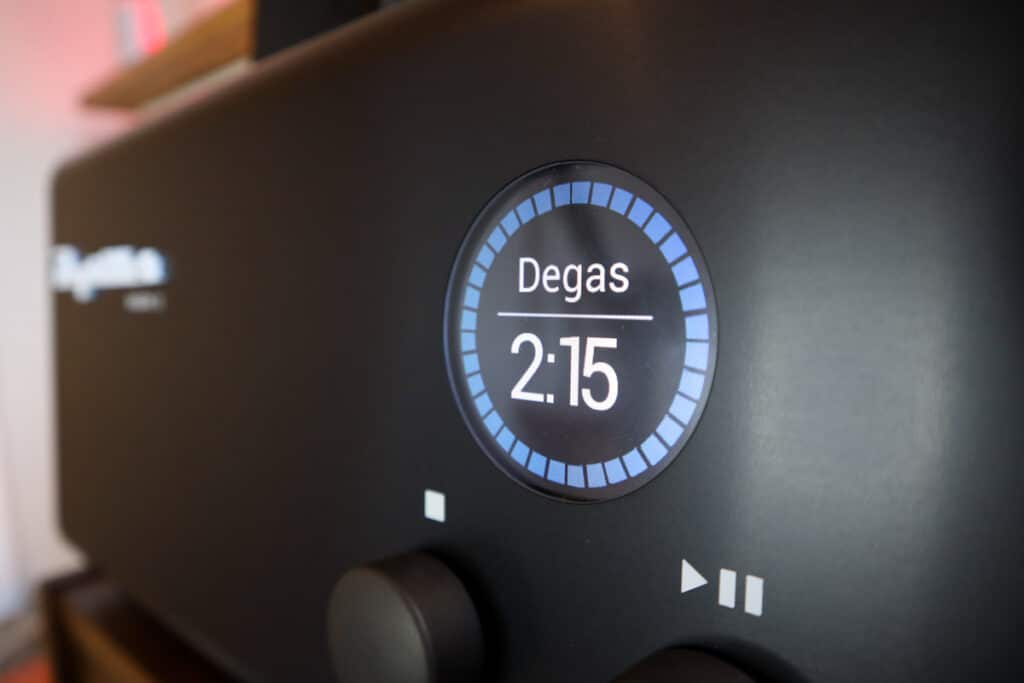
Once the Degas cycle is complete, you can use the supplied pipette to add up to 2ml of Degritter’s record cleaning fluid.
Though there is some debate about the use of surfactants and cleaning agents in ultrasonic record cleaning machines, in my experience, the water simply can’t effectively soak into the grooves without it. Instead, it has a tendency to sit on the record surface, reducing its effectiveness.
If exposure to surfactants and emulsifiers typically found in record cleaning fluids concerns you, then Degritter have the perfect answer to this: a secondary “rinse” cycle.
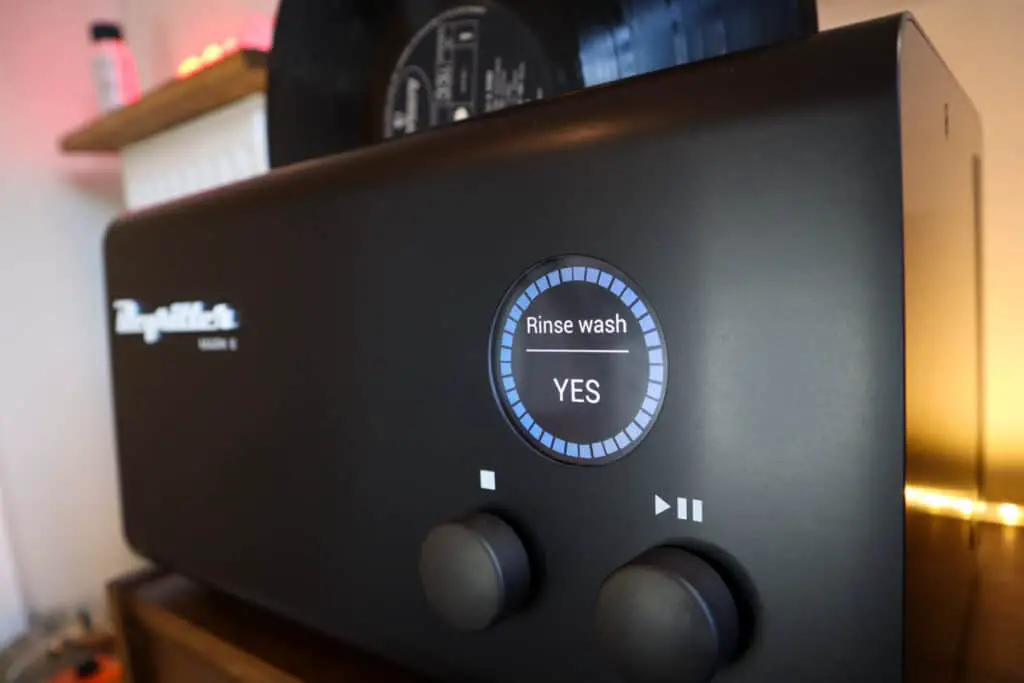
Degritter Record Cleaning Rinse Cycle
Adding a secondary rinse stage to remove any record cleaning fluid contamination is super-simple, but it will require you to purchase a second water tank that you can fill only with distilled water.
To enable the rinse wash cycle, all you need do is navigate to the rinse menu and toggle the step “on” and or “off”.
Once enabled, your chosen cleaning program is clearly labeled under the stated cycle time with “Rinse Wash”. This does add a couple of minutes to the entire cycle, but it’s an advisable step if you want the purist, cleanest records possible.
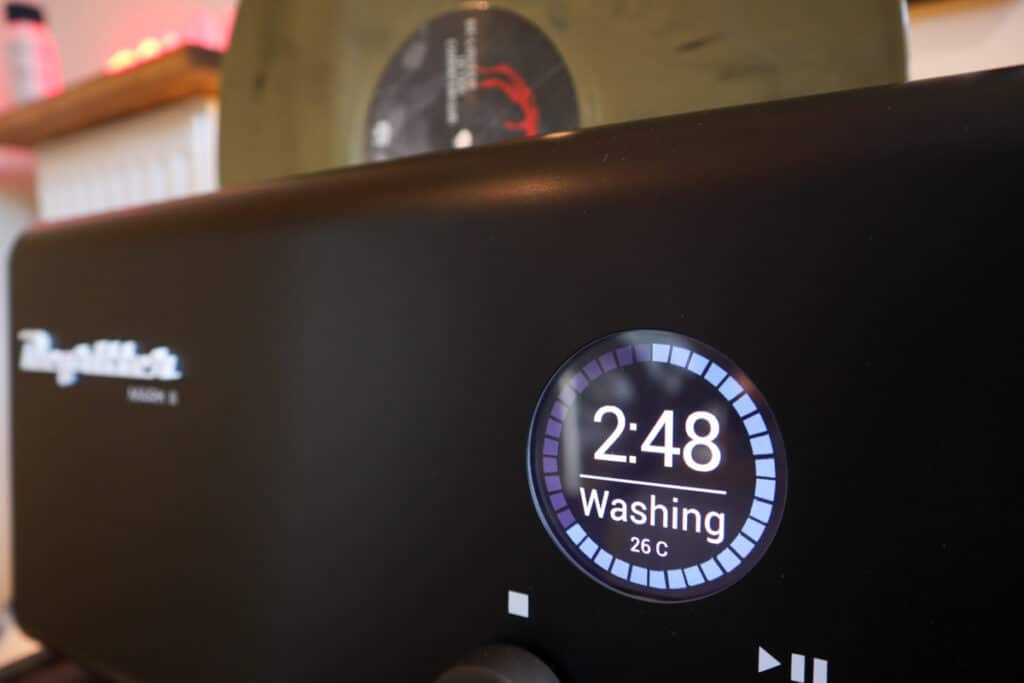
Degritter Record Cleaner Review: Cleaning Results
I spent a solid three months cleaning records with the Degritter MARK II to ensure I could give an informed review. Over 100 records were cleaned, and I must say, I am seriously impressed.
To hear my test samples, check out the YouTube video embedded at the top of this review.
There you will hear the run-in groove of two clear examples where the Degritter took a record straight from a thrift store/charity shop (no assistance given with a pre-clean using a carbon fiber record brush) and managed to transform the sound from a snap, crackle, and pop fest to a squeaky clean noise-floor.
I was particularly impressed with the cleaning results of my quadraphonic copy of Pink Floyd Wish You Were Here, which was cleaned by the record store, but still sounded pretty disappointing.
Out of frustration, I went hell for leather with this record running a “heavy” cycle and was blown away by the improvement.
Unlike my experience with the HumminGuru Ultrasonic record cleaning machine, which often benefited from multiple cycle runs on the same record (or perhaps a quick pre-clean using a VCM first, the Degritter (in most cases) gets the job done in a single cycle.
Degritter vs HumminGuru
O.K – so at this point, let’s address the elephant in the room….price.
The Degritter doesn’t come cheap at over $3000/£2000.
Naturally, this raises the question, what do I get when buying a Degritter over, say, the much more affordable HumminGuru at just $499.
This is a BIG question, and again, you can hear some audio samples in the embedded YouTube video.
Aside from the general build quality (the HumminGuru is clearly built to a price and feels much more plasticity and flimsy compared with the Degritter), there is the glaring issue of power.
Ultrasonic record cleaning machines require a good amount of power to generate the cavitation bubbles for record cleaning; there is a big difference when it comes to each of these machines.
The Degritter uses 300W to generate its 120KHz frequency across four transducers.
The HumminGuru uses only 60W to produce a 40KHz frequency with just two transducers.
This glaring difference does raise some concerns as to whether or not the HumminGuru has enough “juice” to get the job done.
The Vinyl Attack YouTube channel produced a great feature on this, which I recommend you check out.
The low power by comparison goes a long way to explain why, in my experience, why the HumminGuru often benefits from multiple runs on the same record.
This comparison is a little unfair given the vast price difference, but it’s important to state.
Besides cleaning power, the HumminGuru also isn’t as smartly engineered as the Degritter.
Take these smart Degritter features, for example, which are not present on the HumminGuru:
Automatic cleaning tank filling and draining: The Degritter is truly automatic, automatically filling and draining the cleaning basin with each cycle. With the HumminGuru, you will have to fill the basin manually.
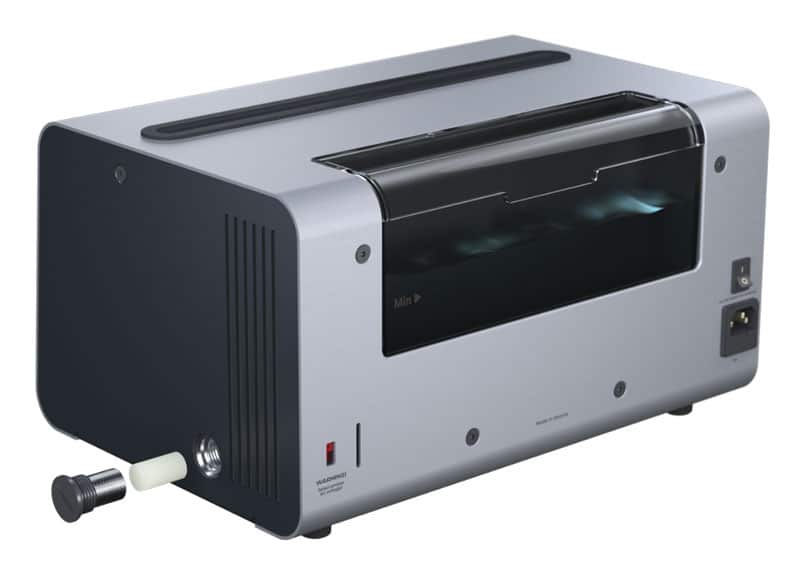
Active Filtering: The Degritter continuously pumps the water through its replaceable filter ensuring dirt doesn’t make its way back onto the record surface.
(Every 50 records, the Degritter will automatically prompt you that it’s time to clean or replace the filter).
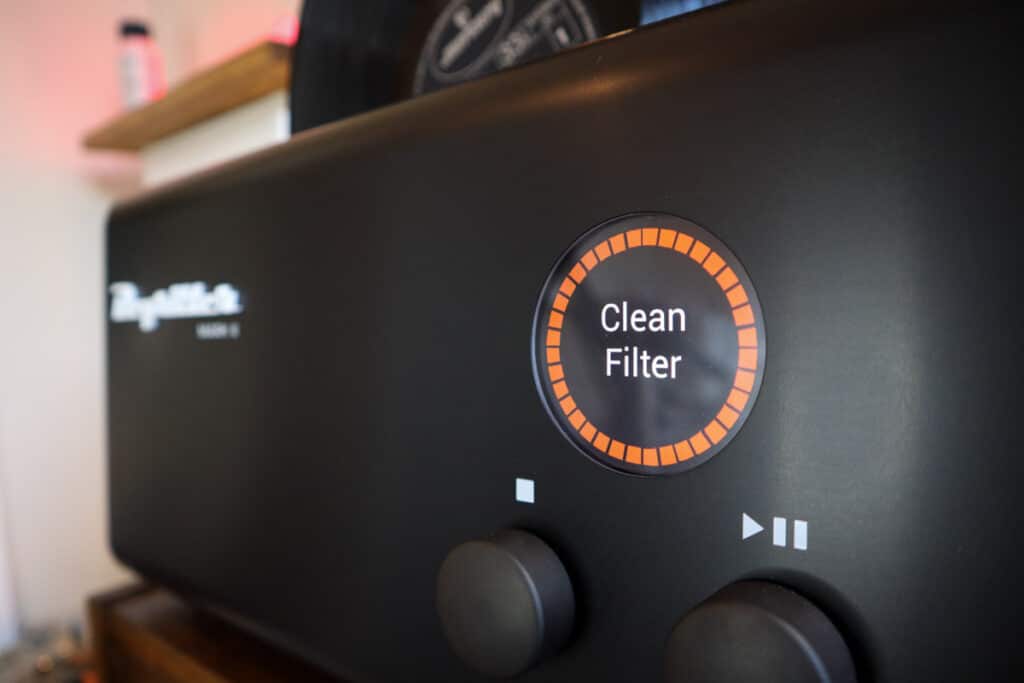
Water Temperature Control:
Any ultrasonic record cleaner will cause the water temperature to rise. The last thing we want is this to cause record warping.
To keep your records safe, the Degritter continuously monitors water temperature, and should it exceed 35°C (95°F), the Degritter will automatically trigger a cooling cycle.
As summer temperatures come in, I have found this to be invaluable, as it happens quicker than you think! If you own a HumminGuru, it’s advisable to manually check the water temperature when cleaning a lot of records in one day.
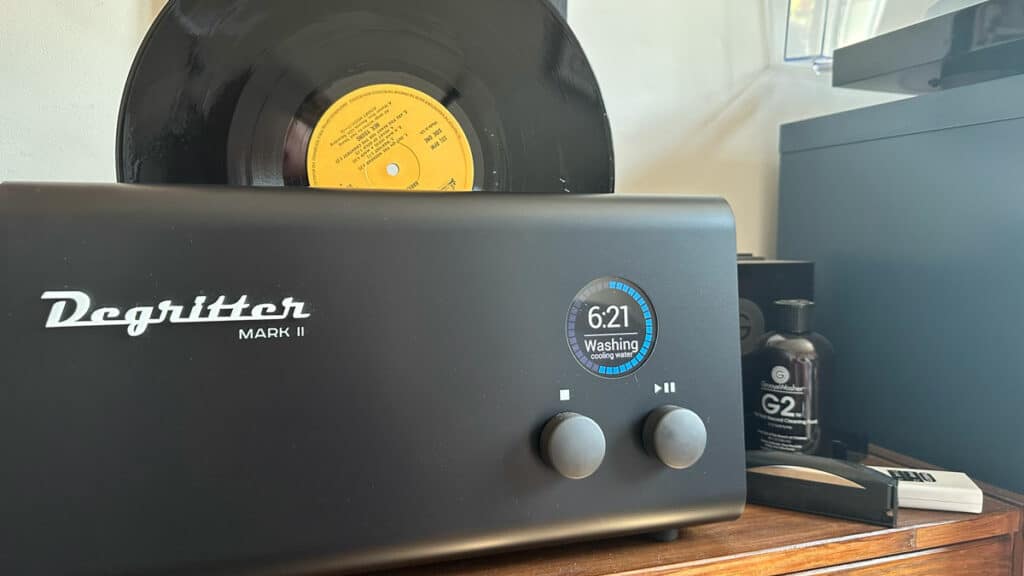
Degritter Review: The Bottom Line
Although it doesn’t come cheap, the Degritter is the best Ultrasonic record cleaning machine for home use, bar-none.
Not only are the cleaning results outstanding and the engineering super-smart, but it also feels luxurious to use day-to-day.
It’s the little touches that make it feel this way, like the high-end feel of the interface and the super-soft push buttons that have a “re-assuring” feel to them.
Having cleaned over 100 records with the Degritter, I simply can’t afford NOT to have this machine in my record cleaning arsenal.
I’ve gotten far too used to the convenience of being able to simply rinse records (both new and used), all while getting on with something more productive, or even better – enjoying more music!
More importantly, I’ve gotten used to all my records being as clean as possible. Sure, it’s not a miracle worker, the Degritter won’t restore damaged records, but it’s as close to a miracle worker I’ve seen when it comes to cleaning records at home.
Granted, $3000+ is a huge outlay. And my recommendations for the Pro-Ject VCMs and the HumminGuru still stand if you’re on a tighter budget. You can, and will, get great results with these machines, you’ll just have to work a little harder to achieve the same outcome.
If you’ve been sitting on the fence about the Degritter for some time, I can wholeheartly say that it’s worth the investment if you buy a lot of used record or want to restore your old collection.
At the time of writing, the original Degritter MARK I represents a comparable bargain as dealers sell off old stock, and while it’s always nice to have the latest incarnation of any product, it’s worth keeping in mind that the MARK I set the standard and remains an impressive product.
Development of the MARK II represents Degritter’s continuous commitment to developing the best at-home record cleaning experience, and I look forward to seeing their next innovation.
degritter.com






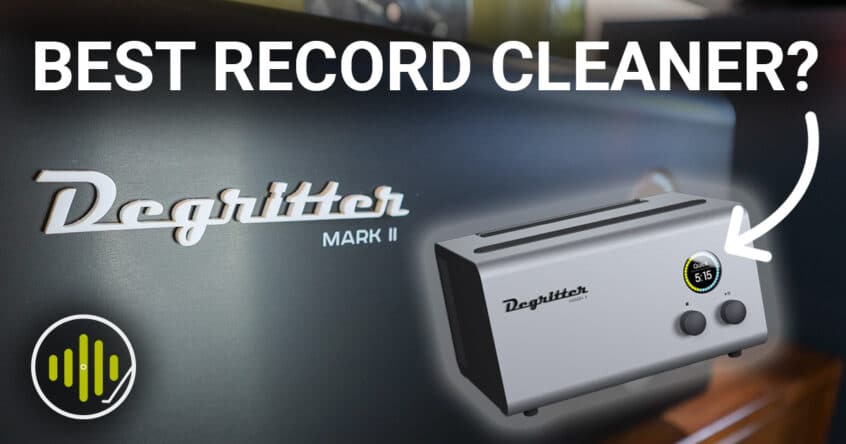


Thanks, this was an excellent review of two very good ultrasonic vinyl record cleaners.
However, on a whim I purchased the Vevor Ultrasonic Cleaner for $229. This is a basic 40KHZ record cleaner. I have now cleaned about 300 records over the past 12 weeks with excellent results. I am using Audio Intelligence Vinyl Solution Concentrate which does not require a rinsing.
For years I used a SOTA Vacuum cleaner with great results. the Ultrasonic has been able to bring additional life back to some of my older records that look clean but still had some deep dirt in the grooves.
In addition, I had a friend gift me 100+ albums from 30 years in storage in a damp basement followed by a year in a garage that had some seepage. The Ultrasonic cleaner took off even the dirtiest grimy caked on soot, there were some paper inserts that literally were bonded to a few albums. I will not play them on my reference TT deck, but they worked just fine on a 40 YO B&O TT with a newer soundsmith MMC3. I have been amazed how the $229 Ultrasonic cleaner has exceeded all of my expectations.
I’ve done my own empirical A/B comparison between the original version of the Degritter and my own lash-up ultrasonic cleaning system consisting of several components from CleanerVinyl (i.e. record rotating machine + filtration pump & filter + record lifter), a good quality 6-liter, 30A, 180W, 200W heating power, 40KHz ultrasonic tank and a Knosti Disco Anti-Stat record washer (basically, the German version of the SpinClean but uses goat hair brushes, instead of microfiber cleaning pads) as a pre-clean and post-rinse step. In total, not counting distilled water, surfactant solution, etc., my investment came to well under $600.00 for the whole shebang.
I chose six records from my collection, all from the mid to late 60s and a few from the early 70s, and played them on a Mofi Ultradeck+M, Mcintosh MA5200, Revel Performa3 F206, Audioquest speaker cables, yada, yada, yada. With one exception, they all sounded great. I then ran these records through my lash-up ultrasonic cleaning system and played them, again, on the same stereo system. All but one (the same one as before) sounded dramatically better. Some of the ticks & pops had vanished. However, these were already clean and well cared for records. So, there was very little in the way of clicks & pops, anyway. The most dramatic improvement was the virtually non-existent (even at a 6 and 7 gain level on the MAC) surface noise, which was very faint before cleaning, anyway, and the utter silence that the music came from. Even the stubborn and poorly recorded and probably poorly pressed album was much quieter. With the exception of that “bad” album, all of the others produced more bass, better high frequencies and, basically, better dynamic range up and down the range.
I then took all of those records to a high-end shop and had them cleaned, again, on a Degritter (original version). That shop wanted to sell me the Degritter. So, I assume they did their best to impress me. When I played those records, later, on exactly the same stereo system, my ears detected no significantly noticeable improvement in sound fidelity over the previous cleaning with my lash-up ultrasonic cleaning system. If I had been able to detect even some very small improvement, I would have gone right back to that shop and purchased a Degritter.
Now, I know this was only my little half-baked experiment and no one should infer too much into the outcome(s). I was hoping to be wowed or, at the very least, get a pleasant “hmm …” out of this experiment. While I can clean 3 records simultaneously, using my lash-up system, it is still a very labor-intensive process. Running 15 records through my system, start to insert in jackets, takes an afternoon. My guess is the Degritter can cut this time down to less than half, even using the heavy-duty cycle, and that is precisely why I am still interested in this machine. If it didn’t cost so much, I’d already have one. I wish Degritter would think in terms of volume and market share. What this Degritter machine has going for it, more than anything else, is that convenience and virtually effortless efficiency. That’s what you are paying for! For $3,280.00 for the MarkII, they should, at least, throw in a free additional water tank!
Every record cleaner that I have seen mentioned on this website would be a ripoff at half the price.
Thousands of dollars for a noisy box capable of cleaning vinyl records only. As if that isn’t inconvenient enough, it can only clean one disc at a time. Every 5 minutes or so, you will have to to check how it’s going. If it’s not done, you’ll have to start the cycle over again. This constant monitoring is a major impediment to multitasking, and you must repeat this tedious exercise for every disc in your collection. If you operate a record store or have a decent sized collection, you will waste years cleaning records. Life is too short. Don’t waste your money or time on any of these gimmicky boxes of misery. Some of them come with a bottle of overpriced proprietary cleaning fluid that actually leaves a residue. Adding insult to injury, they tell us that’s a good thing. The cleaning process inside the machine is completely unobservable. Cool. The only worse choice of record cleaners are those futile, extraordinarily ill-conceived brush and vacuum boxes, of which this record cleaning expert claims to be a proud owner.
Buy a uc-3360 15 litre ultrasonic cleaner directly from the manufacturer. It is the largest, most powerful and versatile table top ultrasonic cleaner available. Buy a Cleanervinyl ProXL record cleaning kit directly from the manufacturer. It is sold by a different company, but is specifically designed to fit the uc-3360. It features a variable speed motor, fans to dry your records after cleaning, and a water filter. Add shipping and import tax and this setup is still cheaper than many one disc at a time ultrasonic cleaners. Your significant other might even let you stay in the house after they see how well it cleans engagement rings and other jewellery.
The uc-3360 is brilliant for cleaning anything that can be safely submerged in water, such as plastic, metal, glass, ceramics, jewels etc. You can set the water level, and the temperature anywhere from room temperature up to 80 degrees celsius and select from three different frequencies. You can automate it to cycle through all 3 frequencies(40kHz, 80kHz and 120kHz), and specify time spent on each freq, with up to 16 vinyl records of any size simultaneously. Once you’ve familiarised yourself with this setup, you can set and forget.
Love your DIY attitude but you are completely wrong. Don’t bother leaving your parents basement. These machines – DeGritter, KLAudio and HumminGuru (to a certain extent) do an exceptional job compared to one of those home Ultrasonic /BBQ inventions. So many people waste money on going for cheap junk that you will eventually get fed up and throw out.
A first class,in depth review,well done and thanks.
I’m still cleaning manually by hand at moment,but with the increasing purchases of vinyl,on a weekly basis to my collection I’m needing now look at other methods.
An ultrasonic cleaner had been on the cards a while now,this may just make me take that step
I’m using my own home made cleaning solution rather than a commercially bought product.
My question is, what solution are you using.
And can a home made solution be used instead,I have tons of my own solution works well,hoping can be used with the degriter
.
Great video,and thanks.
Hey Mark – thanks very much for your kind words and comment.
For this review, I was using the Degritter fluid, but I have also used the GrooveWasher G-Sonic in the HumminGuru with great results.
I’m guessing your homemade cleaning solution isn’t a concentrate, which you would need for adding to an ultrasonic tank of distilled water.
I don’t tend to go down the homemade route, though I know a lot of folks swear by it.
What I can say is that a bottle of G-Sonic goes very far and will make up to 60 gallons of water for ultrasonic tanks.
I also use the GrooveWasher stuff (G2 and G3 fluids) with my Pro-Ject VCM. If you feel like supporting the site and want to try it out, you can get 10% off with my code SOUNDMATTERS10
What’s your current recipe for homemade out of interest?
For the price, it better be the darn best vinyl cleaner!
Hi Marc,
Thanks for the in depth review of the Degritter.
I can appreciate it’s appeal to some vinyl enthusiasts, but for me I’ll stick with my more affordable and efficient Okki Nokki RCM.
The Okki Nokki with the goat hair brush gets the record cleaning solution right into those grooves, puts all the oily residue and other contaminants into a state of suspension and the strong vacuum sucks it all up and also removes any fingerprints or surface marks.
I’m sure the Degritter does a great job of getting the grooves sparkling clean, but did it successfully remove accidental fingerprints or other surface marks?
Anyway, thanks again for the review.
Cheers,
noel
Thanks Noel. Absolutely! I still recommend RCMs. And the Okki Nokki is a great product. So far, the Degritter is surprisingly good with surface-level marks like fingerprints, though in fairness, I am yet to try it with a really bad one. I know ultrasonic is not known for its capabilities in that area!
I think, ultimately, depending on the issues with the record in question, there are pros and cons and a time and a place for each type of cleaning method.
I’ll be keeping my Pro-Ject VCM and GrooveWasher cleaning fluids for many pre-cleaning for sure!
For most of my records though, I really can say this machine makes light work of it all.
Degritter recommends that you Degas AFTER adding the solution. FYI.
I was confused by this in the instructions, as on one page it recommended before, and on another page, after. I figured the safest way was to add the solution after and then let the cycles do the hard work.
great advertisement!
near the end of your commentary you stated:
“Although it doesn’t come cheap, the Degritter is the best Ultrasonic record cleaning machine for home use, bar-none.”
Question now is, what is the best, bar-none solution for non-home use ?
I really don’t know what you mean, John? I think it’s a great product and the results are great. It’s become my main record cleaning machine and will likely remain that way for some time.
Each to their own and their budget. I can highly recommend the Pro-Ject & HumminGuru options as much more affordable options having used all of them extensively.
Enjoy the music and happy spinning